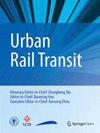论斯蒂芬·楚温小说《但泽之死》中客体的和解潜力
IF 2.9
4区 工程技术
Q4 TRANSPORTATION
引用次数: 0
摘要
本文通过新唯物主义理论的视角,考察了斯蒂芬·楚温1995年的小说《但泽之死》中后德国物品的艺术呈现。在描述但泽/格但斯克从德国城市到波兰城市的历史转变时,Chwin采用了两种策略:他将部分叙事集中在物体和人与物体的纠结上,并采用了一种富有想象力的儿童视角,这种视角倾向于用万物有灵论的观点来看待现实。在运用这些叙事策略时,Chwin的小说与新唯物主义领域的主要代表人物(如Jane Bennett, Stacy Alaimo和Donna Haraway)的作品产生了共鸣。更具体地说,它们的相似之处在于拟人论的运用,使人类对整个世界的感知打开了一个被忽视的活动和过程,这些活动和过程与人类的活动和过程相似。在二战后被迫移民的具体背景下,作者将流离失所的德国人和波兰人——以及德国人的物质财富——视为活跃的实体,他们以松散的、不确定的身份相互接触。人与物所释放或回应的影响,将他们卷入相互转化的关系。因此,我认为,通过新唯物主义的非二元论和非等级本体论,Chwin小说中的人-物关系揭示了物质性的和解潜力,特别是其消除等级和缓和敌意的能力。本文章由计算机程序翻译,如有差异,请以英文原文为准。
The Reconciliatory Potential of Objects in Stefan Chwin’s novel Death in Danzig
This article examines the artistic rendering of post-German objects in Stefan Chwin’s 1995 novel Hanemann [Death in Danzig] through the lens of new materialism theories. In his depiction of the historical transformation of Danzig/Gdansk from a German to a Polish city Chwin applies two strategies: he centers portions of the narrative on objects and human-object entanglements and employs an imaginative child’s perspective which tends to view reality in animistic terms. In utilizing these narrative strategies, Chwin’s novel resonates with the works of the key representatives of the field of new materialism (e.g., Jane Bennett, Stacy Alaimo and Donna Haraway). More specifically, their similarity lies in the employment of anthropomorphism to open human perception to a whole world of unnoticed activities and processes of the nonhuman that resemble those of the human. In the concrete context of post-World War II forced migrations, the writer presents both the displaced Germans and Poles—as well as the German material possessions— as active entities, who come into contact with each other with loosened, uncertain identities. The affects that the humans and the objects discharge or respond to involve them in mutually transformative relations. Thus, I argue that seen through the non-dualist and non-hierarchical ontology of new materialism, the human-object relations in Chwin’s novel reveal the reconciliatory potential of materiality, in particular its ability to level hierarchies and soothe animosity.
求助全文
通过发布文献求助,成功后即可免费获取论文全文。
去求助
来源期刊

Urban Rail Transit
Multiple-
CiteScore
3.10
自引率
6.70%
发文量
20
审稿时长
5 weeks
期刊介绍:
Urban Rail Transit is a peer-reviewed, international, interdisciplinary and open-access journal published under the SpringerOpen brand that provides a platform for scientists, researchers and engineers of urban rail transit to publish their original, significant articles on topics in urban rail transportation operation and management, design and planning, civil engineering, equipment and systems and other related topics to urban rail transit. It is to promote the academic discussions and technical exchanges among peers in the field. The journal also reports important news on the development and operating experience of urban rail transit and related government policies, laws, guidelines, and regulations. It could serve as an important reference for decision¬makers and technologists in urban rail research and construction field.
Specific topics cover:
Column I: Urban Rail Transportation Operation and Management
• urban rail transit flow theory, operation, planning, control and management
• traffic and transport safety
• traffic polices and economics
• urban rail management
• traffic information management
• urban rail scheduling
• train scheduling and management
• strategies of ticket price
• traffic information engineering & control
• intelligent transportation system (ITS) and information technology
• economics, finance, business & industry
• train operation, control
• transport Industries
• transportation engineering
Column II: Urban Rail Transportation Design and Planning
• urban rail planning
• pedestrian studies
• sustainable transport engineering
• rail electrification
• rail signaling and communication
• Intelligent & Automated Transport System Technology ?
• rolling stock design theory and structural reliability
• urban rail transit electrification and automation technologies
• transport Industries
• transportation engineering
Column III: Civil Engineering
• civil engineering technologies
• maintenance of rail infrastructure
• transportation infrastructure systems
• roads, bridges, tunnels, and underground engineering ?
• subgrade and pavement maintenance and performance
Column IV: Equipments and Systems
• mechanical-electronic technologies
• manufacturing engineering
• inspection for trains and rail
• vehicle-track coupling system dynamics, simulation and control
• superconductivity and levitation technology
• magnetic suspension and evacuated tube transport
• railway technology & engineering
• Railway Transport Industries
• transport & vehicle engineering
Column V: other topics of interest
• modern tram
• interdisciplinary transportation research
• environmental impacts such as vibration, noise and pollution
Article types:
• Papers. Reports of original research work.
• Design notes. Brief contributions on current design, development and application work; not normally more than 2500 words (3 journal pages), including descriptions of apparatus or techniques developed for a specific purpose, important experimental or theoretical points and novel technical solutions to commonly encountered problems.
• Rapid communications. Brief, urgent announcements of significant advances or preliminary accounts of new work, not more than 3500 words (4 journal pages). The most important criteria for acceptance of a rapid communication are novel and significant. For these articles authors must state briefly, in a covering letter, exactly why their works merit rapid publication.
• Review articles. These are intended to summarize accepted practice and report on recent progress in selected areas. Such articles are generally commissioned from experts in various field s by the Editorial Board, but others wishing to write a review article may submit an outline for preliminary consideration.
 求助内容:
求助内容: 应助结果提醒方式:
应助结果提醒方式:


